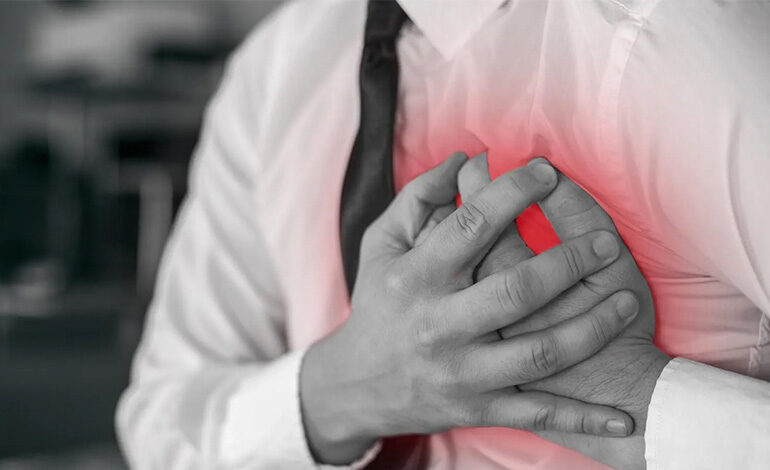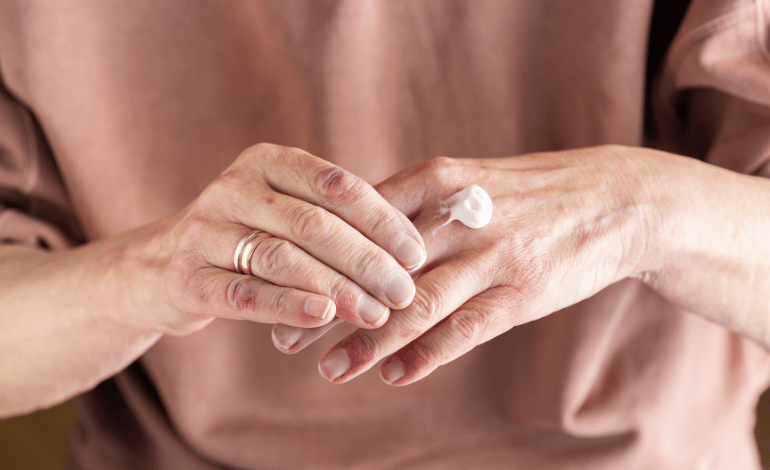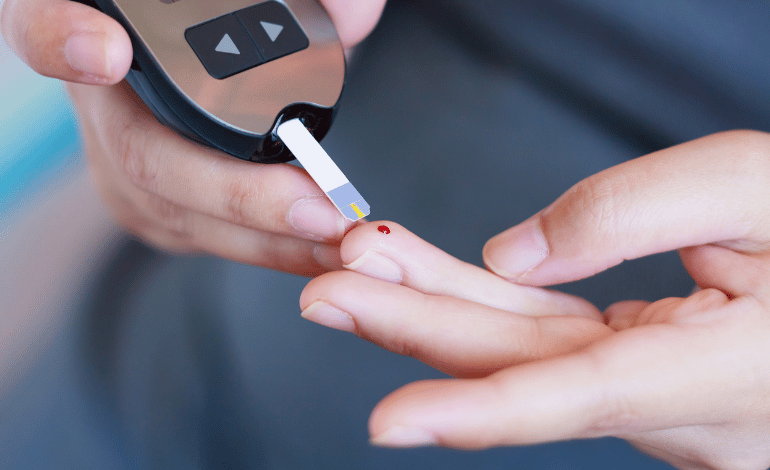Heart Attack Causes, Symptoms, Prevention and Treatment

Heart Attack Causes, Symptoms, Prevention and Treatment- A heart attack, also known as a myocardial infarction (MI), is a serious medical emergency that occurs when blood flow to the heart muscle is blocked, usually by a blood clot. The heart muscle needs a constant supply of oxygen and nutrients from the blood to function properly. When blood flow to the heart is reduced or blocked, the heart muscle begins to die, leading to permanent damage or even death.
The most common cause of a heart attack is atherosclerosis, a condition in which fatty deposits called plaque build up in the walls of the coronary arteries, which supply blood to the heart muscle. Plaque can rupture, leading to the formation of a blood clot that blocks blood flow to the heart.
Symptoms of a heart attack can vary from person to person but often include chest pain or discomfort that may radiate to the arms, back, neck, or jaw. Other symptoms may include shortness of breath, sweating, nausea or vomiting, and lightheadedness. It is important to seek emergency medical attention immediately if you or someone else is experiencing symptoms of a heart attack, as early treatment can help prevent permanent damage to the heart muscle and save a life.
According to the World Health Organization (WHO), cardiovascular diseases (CVDs), including heart attacks, are the leading cause of death globally, accounting for an estimated 17.9 million deaths in 2019. This represents about one-third of all global deaths. CVDs affect people of all ages and income levels, but they are more prevalent in low- and middle-income countries. The burden of CVDs is expected to continue to rise in the coming years due to aging populations, unhealthy diets, sedentary lifestyles, and tobacco use. It is important to take preventive measures, such as adopting a healthy lifestyle and getting regular medical check-ups, to reduce the risk of heart disease and heart attacks.
According to a study published in the Indian Heart Journal in 2021, there has been a significant increase in the incidence of heart attacks among young adults in India, with the average age of heart attack patients decreasing from 56 years to 52 years over the past decade.
The study also found that many of these patients had modifiable risk factors for heart disease, such as smoking, high blood pressure, and diabetes, indicating that lifestyle changes and proper medical management of these risk factors could help prevent heart attacks in younger individuals.
In response to this trend, there have been efforts to raise awareness about the importance of healthy lifestyle choices and early detection of heart disease in India. The government has also implemented various programs to improve access to healthcare and medical services for individuals at risk of heart disease.
Heart Attack Causes
A heart attack occurs when there is a blockage in one or more of the blood vessels that supply blood to the heart muscle, which leads to a lack of oxygen and nutrients to the heart muscle. The most common cause of a heart attack is a condition called coronary artery disease (CAD), which is the buildup of plaque (cholesterol, fat, and other substances) inside the walls of the coronary arteries that supply blood to the heart muscle. CAD can cause narrowing or blockages in the coronary arteries, which can lead to a heart attack.
Other factors that can contribute to a heart attack include:
- High blood pressure (hypertension)
- High cholesterol levels (hyperlipidemia)
- Smoking
- Obesity or overweight
- Physical inactivity or a sedentary lifestyle
- Diabetes or insulin resistance
- Family history of heart disease
- Age (risk of heart attack increases with age)
- Stress or anxiety
- Excessive alcohol consumption
In some cases, a heart attack may occur without any obvious underlying cause. This is sometimes referred to as a “silent” heart attack, and may occur in people who have diabetes, older adults, or people with other underlying health conditions.
What causes heart attack at young age?
While it is true that heart attacks are typically associated with older individuals, it is rare for young children to experience a heart attack. However, there are certain medical conditions or factors that can increase the risk of heart disease in children and can lead to heart attacks.
One of the most common factors that can increase the risk of heart disease in children is obesity. Childhood obesity has become a major public health issue in many parts of the world, and it can lead to various health problems, including high blood pressure, high cholesterol, and diabetes, all of which can increase the risk of heart disease and heart attacks.
Other factors that can increase the risk of heart disease in children include genetic disorders, such as familial hypercholesterolemia, congenital heart defects, and certain medical conditions, such as Kawasaki disease.
It is important for parents and healthcare providers to be aware of the risk factors for heart disease in children and to take steps to manage these risk factors through healthy lifestyle choices, regular physical activity, and appropriate medical management of underlying medical conditions. It is also important to seek prompt medical attention if a child experiences any symptoms of a heart attack, such as chest pain, shortness of breath, or fainting.
Symptoms of Heart Attack in Men
The most common symptoms of a heart attack in men are:
- Chest pain or discomfort: Men may experience chest pain or discomfort that feels like a pressure, tightness, fullness, or squeezing sensation in the center of the chest. The pain may last for several minutes or come and go.
- Pain or discomfort in other parts of the upper body: Men may also experience pain or discomfort in other areas of the upper body, such as the arms, back, neck, jaw, or stomach.
- Shortness of breath: Men may feel short of breath, which can occur with or without chest pain.
- Cold sweats: Men may experience cold sweats or clammy skin, which is often accompanied by other heart attack symptoms.
- Nausea or vomiting: Men may feel nauseous or vomit, which can be a sign of a heart attack.
- Dizziness or lightheadedness: Men may feel dizzy or lightheaded, which can also be a sign of a heart attack.
It’s important to note that not all men will experience all of these symptoms. Some men may only experience mild symptoms, while others may not experience any symptoms at all. If you or someone you know is experiencing any symptoms of a heart attack, it’s important to seek emergency medical attention right away. Early treatment can greatly improve the chances of survival and recovery.
Symptoms of Heart Attack in Women
Women are more likely to experience symptoms that are less commonly associated with heart attacks. The symptoms of a heart attack in women can be different from those in men, and may include:
- Chest pain or discomfort: Women may experience a dull or heavy sensation in the chest, rather than the sharp or crushing pain often associated with heart attacks in men.
- Pain or discomfort in other areas of the upper body: Women may also experience pain or discomfort in one or both arms, the neck, jaw, shoulder, back, or stomach.
- Shortness of breath: Women may feel short of breath, which can occur with or without chest discomfort.
- Fatigue: Women may experience sudden fatigue or weakness, which may be overwhelming and last for several days.
- Nausea or vomiting: Women may feel nauseous or vomit, which can be a sign of a heart attack.
- Sweating: Women may experience a sudden, cold sweat or clammy skin, which is often accompanied by other heart attack symptoms.
- Dizziness or light-headedness: Women may feel dizzy or lightheaded, which can also be a sign of a heart attack.
It’s important to note that not all women will experience all of these symptoms. Some women may only experience mild symptoms, while others may not experience any symptoms at all. If you or someone you know is experiencing any symptoms of a heart attack, it’s important to seek emergency medical attention right away. Early treatment can greatly improve the chances of survival and recovery.
How Modern Lifestyle is Responsible of Heart Attack?
Modern lifestyle has been associated with an increased risk of heart attacks and other cardiovascular diseases. Several factors of modern lifestyle that can contribute to heart attacks include:
- Poor diet: A diet high in processed and fast foods, sugar, and saturated and trans fats can contribute to high cholesterol levels, high blood pressure, and obesity, all of which are risk factors for heart disease.
- Sedentary lifestyle: Modern work environments often involve long periods of sitting, which can lead to a lack of physical activity. A sedentary lifestyle can contribute to obesity, high blood pressure, and high cholesterol levels, which are all risk factors for heart disease.
- Stress: Modern life is often fast-paced and stressful, which can lead to chronic stress. Chronic stress can contribute to high blood pressure and other risk factors for heart disease.
- Lack of sleep: Modern lifestyle often involves staying up late and getting up early, which can result in a lack of sleep. Poor sleep has been associated with an increased risk of heart disease.
- Smoking and excessive alcohol consumption: Modern lifestyle can also include behaviors that increase the risk of heart disease, such as smoking and excessive alcohol consumption.
It is important to adopt a healthy lifestyle to reduce the risk of heart disease and heart attacks. This includes eating a balanced diet, getting regular exercise, managing stress, getting adequate sleep, not smoking, and limiting alcohol consumption. By making these lifestyle changes, individuals can improve their overall health and reduce their risk of heart disease and heart attacks.
Emergency Steps to be Taken for Heart Attack
In case of a suspected heart attack, it is important to take immediate action and seek emergency medical attention. Here are the steps to take:
- Call for emergency medical services: If you or someone around you experiences symptoms of a heart attack, call for an ambulance or emergency medical services right away. Do not wait to see if the symptoms go away.
- Provide any necessary information: When you call for emergency medical services, provide as much information as possible about the situation, including the location, the individual’s age, gender, and medical history, and the symptoms they are experiencing.
- Stay calm and help the person: If you are with someone who is experiencing a heart attack, stay calm and help them to sit down or lie down. Loosen any tight clothing and reassure them that help is on the way.
- If possible, give aspirin: If the person is not allergic to aspirin and it is available, you may consider giving them a 325 mg aspirin to chew and swallow. Aspirin can help reduce the risk of blood clots and minimize damage to the heart muscle.
Remember, time is critical during a heart attack. The sooner medical treatment is provided, the better the chances of survival and recovery. Do not hesitate to seek emergency medical attention if you suspect a heart attack.
Precautions to be taken after First Heart Attack
If you or someone you know has experienced a stroke or heart attack, it’s important to take precautions to prevent future incidents. Here are some general guidelines:
- Follow your doctor’s instructions: Your doctor will provide specific instructions on what to do after your stroke or heart attack. It’s important to follow these instructions carefully, including taking any medications as prescribed.
- Manage risk factors: Manage or reduce your risk factors for future cardiovascular incidents, including high blood pressure, high cholesterol, and diabetes. Adopt healthy lifestyle changes like regular exercise, a heart-healthy diet, and quitting smoking.
- Attend follow-up appointments: Make sure to attend all follow-up appointments with your doctor to monitor your progress and receive any necessary treatment adjustments.
- Seek immediate medical attention: If you experience any symptoms of a stroke or heart attack, seek immediate medical attention. Time is critical in these situations and delays in treatment can be life-threatening.
- Consider cardiac rehabilitation: Cardiac rehabilitation is a structured program of exercise, education, and support designed to help you recover from a heart attack or stroke and prevent future incidents. Ask your doctor if this is an option for you.
- Get emotional support: A stroke or heart attack can be a traumatic experience. It’s important to seek emotional support from friends, family, or a mental health professional to help you cope with any emotional or psychological issues that may arise.
Remember, taking these precautions and maintaining a healthy lifestyle can help reduce your risk of future cardiovascular incidents and improve your overall health and well-being.
Treatment of Heart Attack
The treatment of a heart attack typically involves a combination of emergency medical care, medication, and lifestyle changes to prevent future heart problems. The goals of treatment are to quickly restore blood flow to the heart, prevent or limit damage to the heart muscle, and prevent complications or future heart problems.
Here are some common treatments for a heart attack:
- Emergency medical care: If you or someone you know is having a heart attack, call emergency services right away. Treatment in the emergency room may include oxygen therapy, aspirin, nitroglycerin, or other medications to help restore blood flow to the heart.
- Medications: After a heart attack, your doctor may prescribe medications to reduce the risk of future heart problems. These may include medications to lower blood pressure, reduce cholesterol levels, prevent blood clots, or manage underlying health conditions such as diabetes or heart failure.
- Procedures: In some cases, procedures such as angioplasty or bypass surgery may be necessary to restore blood flow to the heart or bypass blocked or narrowed arteries.
- Cardiac rehabilitation: Your doctor may recommend cardiac rehabilitation, which is a supervised exercise and education program that can help you recover from a heart attack and reduce your risk of future heart problems.
- Lifestyle changes: Making healthy lifestyle changes, such as eating a healthy diet, exercising regularly, quitting smoking, and managing stress, can help reduce your risk of future heart problems.
It’s important to follow your doctor’s recommendations for treatment and take all medications as prescribed. With prompt medical care and ongoing management, many people who have had a heart attack can lead healthy, active lives.
Healthy Diet Tips for Heart Patients
A heart-healthy diet can help improve cardiovascular health and reduce the risk of future heart problems. Here are some healthy diet ideas for heart patients:
- Focus on fruits and vegetables: Eating a variety of fruits and vegetables can help provide essential nutrients, fiber, and antioxidants that are important for heart health. Aim for at least 5 servings of fruits and vegetables per day.
- Choose whole grains: Whole grains are high in fiber and can help lower cholesterol levels. Try incorporating whole grain bread, pasta, and cereals into your diet.
- Eat lean protein: Choose lean sources of protein such as skinless poultry, fish, beans, and legumes. Limit red meat and processed meats.
- Use healthy fats: Use heart-healthy fats such as olive oil, canola oil, and avocado instead of butter and other saturated fats. Include foods with healthy fats like nuts, seeds, and fatty fish like salmon.
- Limit sodium: Consuming too much sodium can raise blood pressure and increase the risk of heart disease. Choose low-sodium options when available and avoid adding salt to your food.
- Limit added sugars: Consuming too much added sugars can increase the risk of obesity, diabetes, and heart disease. Limit sugary drinks and choose whole fruits as a natural sweetener.
- Drink plenty of water: Staying hydrated is important for heart health. Aim for at least 8 cups of water per day.
Remember, it’s important to consult with your doctor or a registered dietitian to determine the best diet plan for your specific needs and medical conditions.
Foods to Avoid by Heart Patients
Heart patients should avoid or limit certain foods that can increase the risk of heart disease or exacerbate existing heart conditions. Here are some foods to avoid or limit:
- Saturated and Trans Fats: Avoid or limit intake of foods high in saturated and trans fats, such as red meat, full-fat dairy products, and processed foods like fried and baked goods. These fats can raise cholesterol levels and increase the risk of heart disease.
- Sodium: Limit intake of sodium, which can increase blood pressure and put strain on the heart. Avoid processed foods that are high in sodium, like canned soups and pre-packaged meals. Try using herbs and spices to flavor foods instead of salt.
- Added Sugars: Avoid or limit intake of added sugars, which can increase the risk of obesity, diabetes, and heart disease. Limit sugary drinks and desserts.
- Alcohol: Drinking too much alcohol can raise blood pressure and increase the risk of heart disease. It’s recommended that men limit their alcohol intake to two drinks per day, and women limit to one drink per day.
- Caffeine: While moderate amounts of caffeine are generally safe for heart health, it can cause heart palpitations or irregular heartbeats in some people. Limit caffeine intake if it affects your heart rhythm.
- Excess calories: Overeating or consuming too many calories can lead to obesity and increase the risk of heart disease. Limit high-calorie foods and drinks, and aim for a balanced diet with appropriate portion sizes.
Remember, it’s important to consult with your doctor or a registered dietitian to determine the best diet plan for your specific needs and medical conditions.
Conclusion
A heart attack can be a life-threatening medical emergency that requires prompt treatment. Knowing the signs and symptoms of a heart attack can help you or someone you know get medical help quickly, which can greatly improve the chances of survival and recovery.
While men and women may experience different symptoms of a heart attack, the most common symptom is chest pain or discomfort. Other symptoms may include pain or discomfort in other areas of the upper body, shortness of breath, nausea, sweating, fatigue, dizziness, or lightheadedness.
The most common cause of a heart attack is coronary artery disease, which is the buildup of plaque inside the coronary arteries that supply blood to the heart muscle. Other risk factors for a heart attack include high blood pressure, high cholesterol, smoking, obesity, physical inactivity, diabetes, family history of heart disease, age, stress, and excessive alcohol consumption.
Treatment for a heart attack may include emergency medical care, medications, procedures, and lifestyle changes. With prompt medical care and ongoing management, many people who have had a heart attack can lead healthy, active lives. It’s important to take steps to reduce your risk of a heart attack, such as maintaining a healthy weight, eating a healthy diet, exercising regularly, not smoking, and managing underlying health conditions.








